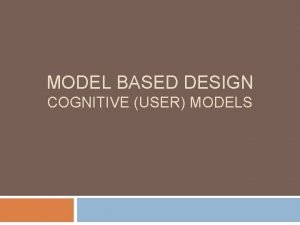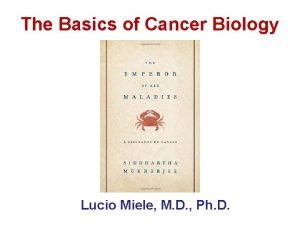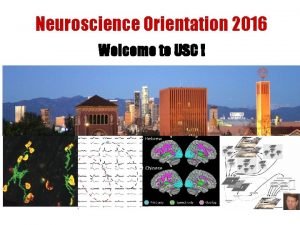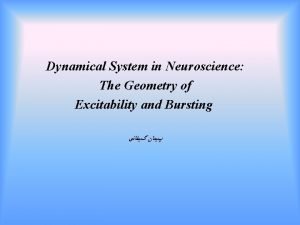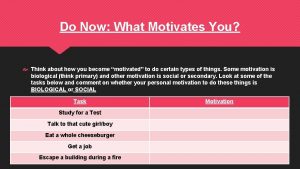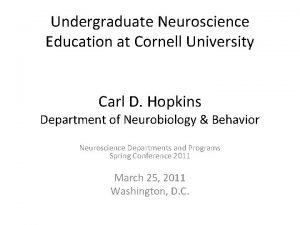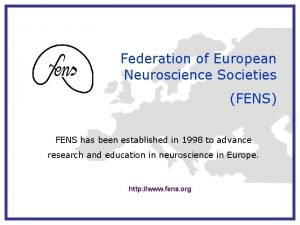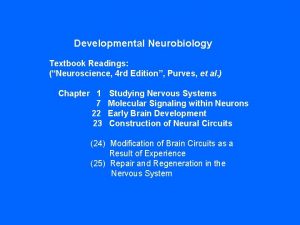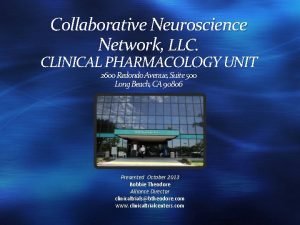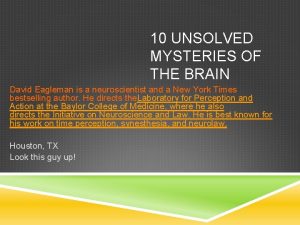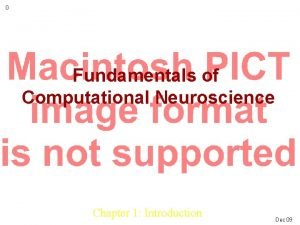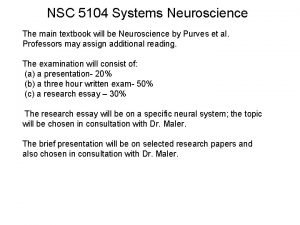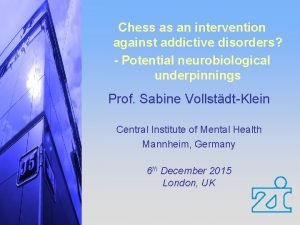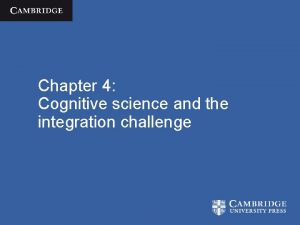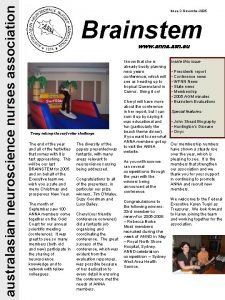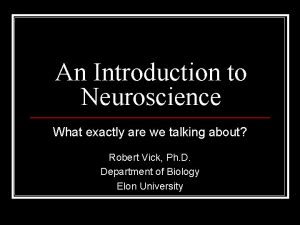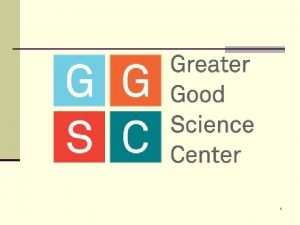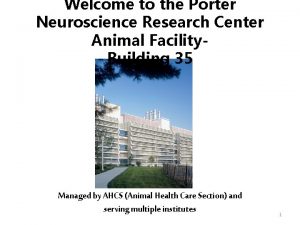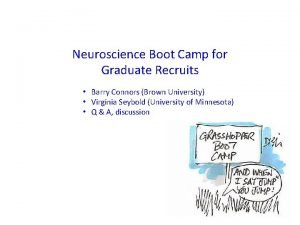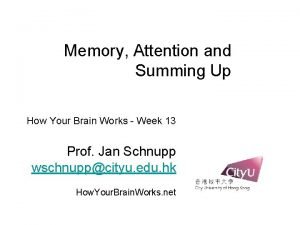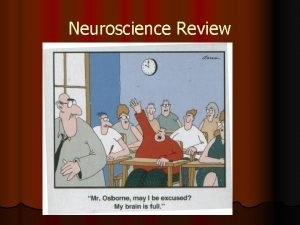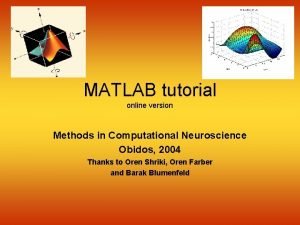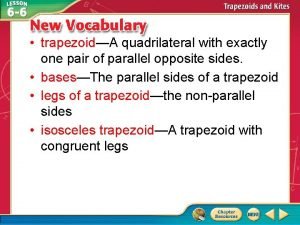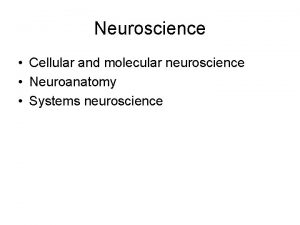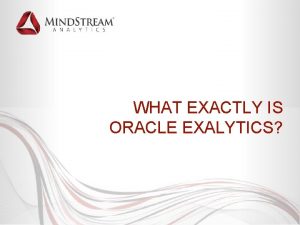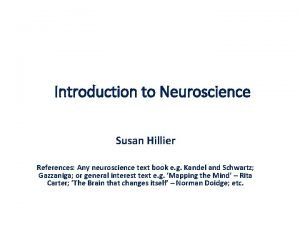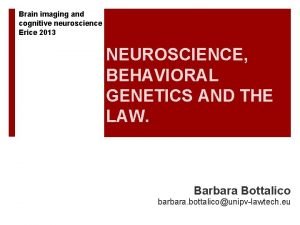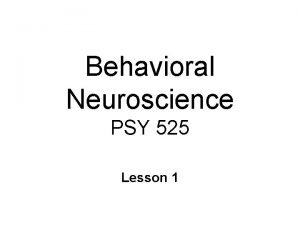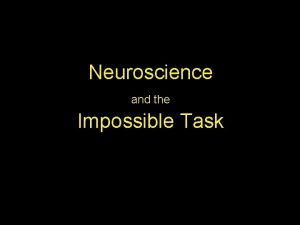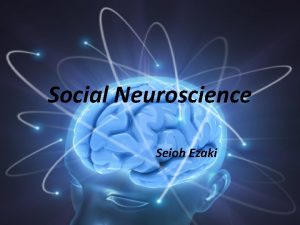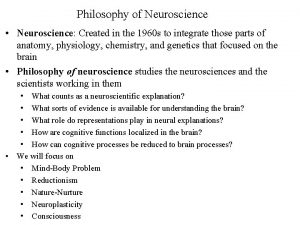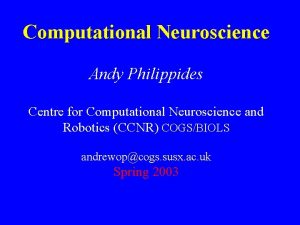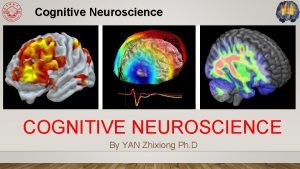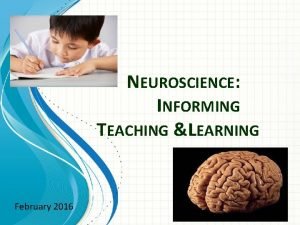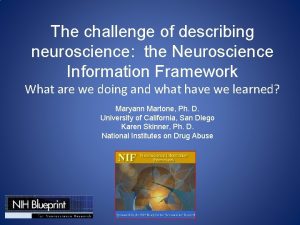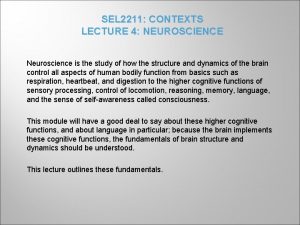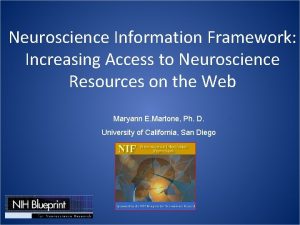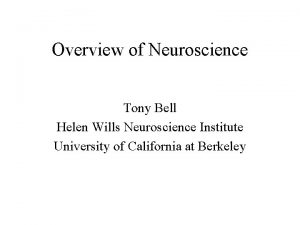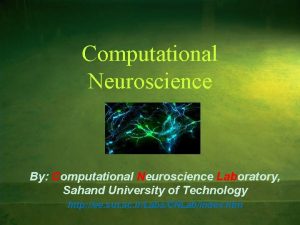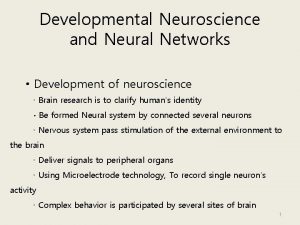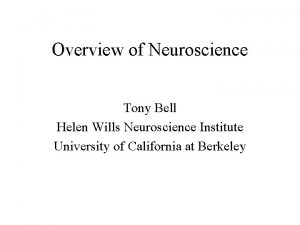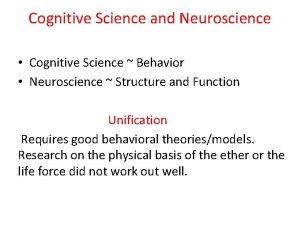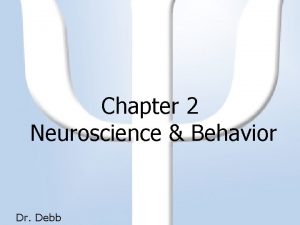An Introduction to Neuroscience What exactly are we






























- Slides: 30

An Introduction to Neuroscience What exactly are we talking about? Robert Vick, Ph. D. Department of Biology Elon University

Disclaimer n I am a physiologist with an interest in cellular neurochemistry. I have tried to include as many aspects of neuroscience as I can, and this presentation should be taken with a grain of salt. I apologize to any one, group, or discipline that I may not have given adequate due to. Any perceived slight is unintentional.

Challenges Faced by Neuroscientists n Understand the biological basis of n n n Consciousness Perception Actions Learning Memory Disease

Challenges Faced by Neuroscientists n Are these processes localized to specific regions of the brain? n n n If so, how does the anatomy and physiology of these specific regions work? What level (region, sub region, neuron) do we need to go to understand? Are these processes a collective property of the whole brain?

Challenges Faced by Neuroscientists How does the genetics of an organism influence behavior or perceptions or memory, etc? n How does previous experience alter the way the brain processes and perceive subsequent events? n

What Do Neuroscientists Study? n Medical problems n n Comparative animal problems n n Sensory, behavior Psychological problems n n Diseases, treatments Learning and memory, behavior, processing Exercise problems n Motivation, effective training techniques

Where Do You Find a Neuroscientist? Hospitals and Medical Centers n Government n n FDA Colleges and Universities n Pharmaceutical companies n Private research organizations n

What part of the organism do we study? n Cellular Level n n n CNS v PNS Neurons Glia n n Astrocytes v Fibroblasts Oligodendrocytes v Schwann Cells Microglia Ependymal cells

What part of the organism do we study?

What part of the organism do we study? n Neurochemistry n Neurotransmitters n n Neuropharmachology n n Acetylcholine, Catecholamines, Neuropeptides, Histamines, etc. Tylenol, Imitrex, Tegretol, etc. Behavioral Neurochemistry n Psychotic disorders, Affective disorders, Anxiety, Learning and Memory

What part of the organism do we study?

What part of the organism do we study? n Neurophysiology n Electrical signaling n n n Action potentials Vm=RT/z. F ln Co/Ci Neural circuitry n n Muscle control, Reflexes, Learning, Memory Processing sensory inputs and making sense of them

What part of the organism do we study? n Neurophysiology n n n How the brain controls the musculature Process that control what the brain is used for – sleep and attention How the brain processes and uses language

What part of the organism do we study?

What part of the organism do we study? n Neuroanatomy n n Gross level Neurohistology

What part of the organism do we study?


Neurobiology - Multidisciplinary Molecular Biology n Biochemistry n Cell Biology n Physiology n Anatomy n Behavior n

What organisms do we use? Honey bee n Fruit fly n C. elegans n Aplysia n Octopus n Rodents n Humans n

A Neuroscience Example n Multiple sclerosis n n n Chronic progressive autoimmune disease that affects the nerves in the brain and spinal cord Affects 400, 000 in the US and 2. 5 million people worldwide 2 -3 times as many women are affected as men

Multiple Sclerosis n Molecular biology approach n Try to determine what is attacking the myelin sheath

Multiple Sclerosis n Biochemical/Cell Biology n An attack on the myelin in the CNS n n n May be viral, may be autoimmune Scarring occurs and may form sclerotic areas Try to determine what is being exposed in the myelin to trigger an immune response n n Lipid/protein biochemistry Immunology

Multiple Sclerosis n Physiologic n n n Damage can slow or block electrical nerve signals that control muscle coordination, strength, sensation, and vision MS patients are extremely heat sensitive – can be a cause of death Examine the pathways that are being affected

Multiple Sclerosis n Pharmachologic n Drugs that may lessen the effects of the disease n n Beta interferon, Copaxone, Tysabri, Novantrone Drugs that may help with quality of life n Corticosteroids, muscle relaxants, fatigue reduction, bladder issues

Multiple Sclerosis n Anatomically n n n Identify areas of insult Identify exactly what is being changed Identify if treatments are having a positive or negative effect on the disease

Support the National MS Society

Other neurological diseases in the US Alzheimer’s disease – 3 million and increasing n Parkinson’s disease – 500, 000 n Depression – 15 million n Schizophrenia – 2 million n Stroke – 100, 000 per year n Addiction n

Recap n Society for Neuroscience n Over 30, 000 attendees at 2007 San Diego meeting n 2008 meeting is in Washington DC in November Variety of levels and topics to study n Probably someone you know has some connection to neuroscience n

Acknowledgments n n n Kandel, Schwartz, and Jessell (1991) Principles of Neural Science 3 ed Matthews (2002) Neurobiology 2 ed Enchantedlearning. com Siegel, Agranof, Albers, Molinoff (1989) Basic Neurochemistry 4 ed National Multiple Sclerosis Society MIT open courseware: 901 An Introduction to Neuroscience http: //ocw. mit. edu Belmonte and Thoroughman Introduction to Neuroscience http: //www. mattababby. org Clancy, Barbara An Introduction to Neuroscience http: //faulty. uca. edu/~bclancy/bio 3370. html The Wizard of Oz (1939) www. youtube. com Pinky and the Brain www. youtube. com National Society for Neuroscience Perron et al (1997) Molecular Identification of a Novel Retrovirus Repeatedly Isolated from Patients with Multiple Sclerosis. PNAS 94(14): 7583 -7588

 Insidan region jh
Insidan region jh Cognitive modelling
Cognitive modelling Nature neuroscience
Nature neuroscience Computational neuroscience usc
Computational neuroscience usc Dynamical systems neuroscience
Dynamical systems neuroscience Labelling feelings
Labelling feelings Cornell neuroscience major
Cornell neuroscience major Federation of european neuroscience societies
Federation of european neuroscience societies Developmental neuroscience textbook
Developmental neuroscience textbook Nuclei della base
Nuclei della base Collaborative neuroscience research llc
Collaborative neuroscience research llc Unsolved problems in neuroscience
Unsolved problems in neuroscience Fundamentals of computational neuroscience
Fundamentals of computational neuroscience Abnormal psychology ucf
Abnormal psychology ucf Systems neuroscience textbook
Systems neuroscience textbook Chess addiction treatment
Chess addiction treatment Neuroscience example
Neuroscience example Australasian neuroscience nurses association
Australasian neuroscience nurses association Neuroscience example
Neuroscience example Neuroscience psychology
Neuroscience psychology Porter neuroscience research center
Porter neuroscience research center Nolte
Nolte Neuroboot
Neuroboot Nature neuroscience
Nature neuroscience Jelle bruineberg
Jelle bruineberg A few research
A few research Matlab neuroscience tutorial
Matlab neuroscience tutorial Uw madison neuroscience
Uw madison neuroscience A trapezoid is a quadrilateral with exactly one pair of
A trapezoid is a quadrilateral with exactly one pair of No parallel sides
No parallel sides Triangular prism planes of symmetry
Triangular prism planes of symmetry

